The craziest weather records set or smashed in 2023

2023's weird weather recap
2023 had its fair share of weird weather, from hurricanes to dust devils to wildfires, smoke and drought, we saw it all.
From record-cold wind chills to relentless heat waves and endless days of rain and sun, 2023 had its share of jaw-dropping weather events.
We've gone back and compiled some of the more unusual weather records and events that occurred this past year to prove Mother Nature always seems to have some tricks up her sleeves.
Jan. 10: Toledo, Ohio, received 0.84 inches of rain, which might sound innocuous. However, it will go down as this year's longest-standing daily weather record to be broken. The city's old daily rainfall record for Jan. 10 was 0.83 inches, set in 1872 – a record that had stood for 151 years.
Jan. 20: Three weeks of atmospheric rivers in California calculated to 32 trillion gallons of water after an average of 11 inches of rain and snow-equivalent fell across the state. That is enough to fill the Rose Bowl 210,000 times. The wettest spot was Humboldt County along the Northern California coast at 65.78 inches.

California flooding: Ellen DeGeneres films river of mud outside Montecito home | LiveNOW from FOX
Ellen DeGeneres, Oprah Winfrey, Prince Harry, Meghan Markle and the entire community of Montecito was forced under mandatory evacuation orders by Santa Barbara County officials due to mudslides from a torrential storm. DeGeneres shared a video on Instagram of an overflowing creek by her home as she prepared to evacuate from the town, roughly 90 miles north of Los Angeles. "Montecito is under complete evacuation, the entire town," she said. "This is the five-year anniversary from the fire and mudslides that killed so many people and people lost their homes, their lives. This is crazy ? on the five-year anniversary. We are having unprecedented rain." More LiveNOW from FOX streaming video
Feb. 4: Mt. Washington in New Hampshire recorded a ridiculously cold -108.2-degree wind chill, setting the national record. The temperature was -47 degrees, with a wind speed of 89 mph. The temperature later "warmed" to -45 degrees with a wind gust of 115 mph.
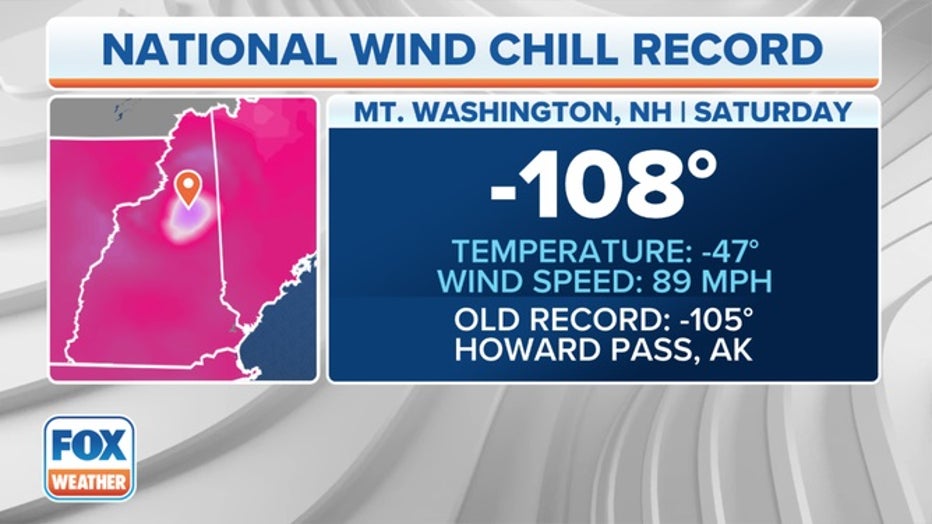
(FOX Weather)
Feb 4: Boston recorded a wind chill of -39 degrees, marking the city's coldest wind chill on record. The ambient temperature dropped to -10 degrees – the city's coldest day since the temperature dropped to -12 degrees in January 1957.
Feb. 22: Portland, Oregon, received 10.8 inches of snow – their second-snowiest day on record.
March 1: A week of relentless atmospheric rivers in California dropped an incredible 144 inches of snow – 12 feet – over six days at Huntington Lake.
March 1: Tucson, Arizona, at 1.5 inches, ended up with more seasonal snowfall than Washington and Philadelphia.
March 15: Los Angeles and San Francisco have more rainfall (24.08 and 27.25 inches, respectively) than Seattle (22.98) since Oct. 1.
March 21: Peak wind gust in San Francisco reached 65 mph. It was the 11th day since the start of the year with a wind gust greater than 53 mph in the city, topped by a gust of 77 mph on March 14.
March 22: An EF-1 tornado struck Los Angeles – the strongest tornado to strike the L.A. metro area in 40 years.
March 24-28: A severe weather outbreak in the Southeast triggered 385 Severe Thunderstorm Warnings, 66 Tornado Warnings (including 4 Tornado Emergencies) and 46 Flash Flood Warnings.
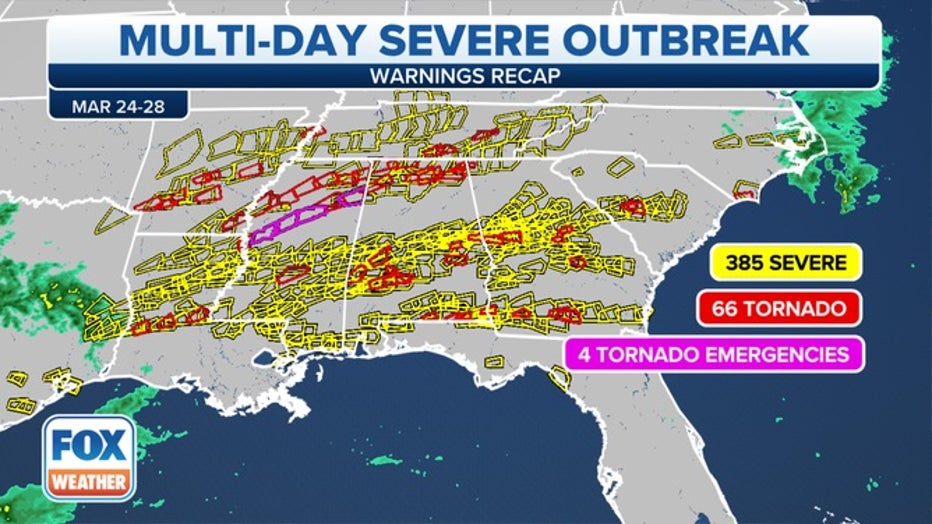
(FOX Weather)
March 30: Denver warmed from 32 degrees to 65 degrees in 75 minutes.
April 1: A line of severe thunderstorms that swept from eastern Ohio into western Pennsylvania was clocked moving at 90 mph.
April 4: A record 785 inches of seasonal snow was measured at Snowbird. They would finish the season at an eye-popping 838 inches of total snowfall.
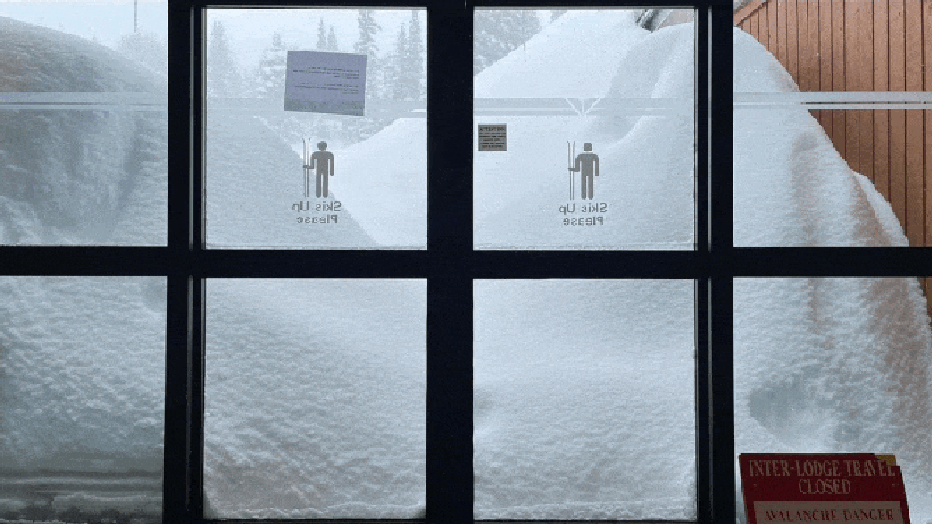
Snow piles up outside the Snowbird Ski Resort in Utah after a record-breaking snow year in early 2023. (Snowbird Ski Resort / FOX Weather)
April 3-4: Casper, Wyoming, had its snowiest day on record – 26.7 inches on April 3 – and the 37.4-inch, two-day storm total into April 4 became the city's greatest snowstorm.
April 12: The skies opened up over Fort Lauderdale in a historic deluge that brought over 2 feet of rain in one day. The rain gauge at the airport failed, but a nearby gauge captured 22.5 inches. The rainfall could become certified as the wettest 24-hour period in Florida state history.
April 13: An unseasonably warm pattern in the north allowed the Toronto Blue Jays to have their earliest roof opening at the retractable-roof Rogers Centre since the stadium opened in 1992.
April 25: For just the third time in history, Portland, Maine, would only have a 1-degree spread in temperatures, with a high of 44 degrees and a low of 43 degrees. However, 32 other cities in the U.S. managed a similar feat in 2023, including Detroit; Duluth, Minnesota; Corpus Christi, Texas; and Fort Wayne, Indiana.
April 28: Seattle reached 80 degrees, becoming the first time in 40 years the city reached its first 70- and 80-degree day on the same date.
May 1: Several cities set records for the lowest atmospheric pressure recorded in May, including Boston (983.6 mb), Montreal (981.2 mb) and New York City (982.1 mb).
May 3: Herman, Michigan, received 52 inches of snow in a multi-day storm – 48 inches of it fell in the first two days of May, shattering the state record for May snowfall.
May 12: Nebraska set a state record with 50 Tornado Warnings issued on the same day. The previous record was 47, set on May 22, 2004.
May 31: "Sunny" San Diego ranked as the Continental U.S.’s cloudiest city in May, with an average of 82.5% daily cloud cover.
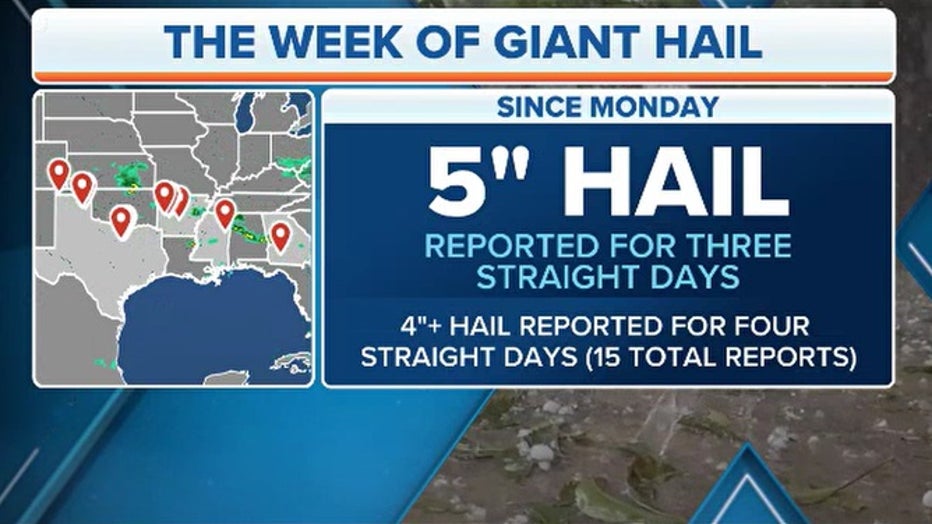
Giant hail reports (FOX Weather)
June 17: The FOX Forecast Center said that for five straight days, hail that measured at least 4 inches in diameter, which is unusually large for the South in June, fell over communities in Oklahoma, Georgia, Mississippi and Texas. That included one stone in Mississippi that measured 4.88 inches across, ranking it as the second-largest hailstone found in state history.

Dozens injured by hail at Red Rocks Amphitheatre
At least seven people were hospitalized and as many as 80-90 others were treated at the scene by medics as golf-ball-sized hail rained down on the crowd during a Louis Tomlinson concert Wednesday evening.
June 21: A 91-mph wind gust at Houston’s Bush Intercontinental Airport was the strongest gust recorded there since the airport opened in 1969. The previous record was 82 mph, measured during 2008’s Hurricane Ike.
June 29: Los Angeles failed to reach 80 degrees – a record 60 consecutive days, failing to reach 80 degrees in May and June. Las Vegas also failed to reach 100 degrees for a record 291 straight days. The Desert Southwest would make up for this in July.
July 18-19: Mayfield, Kentucky, set a state record for 24-hour rainfall with 11.28 inches.
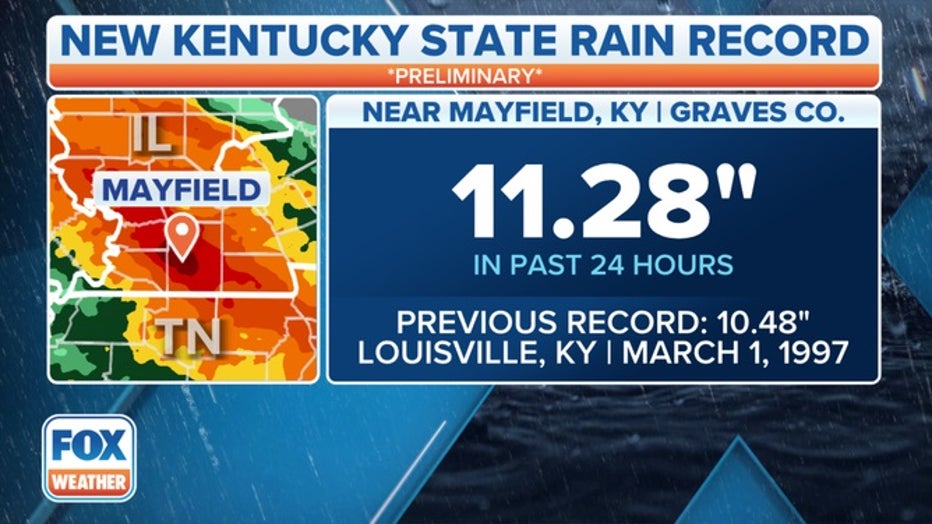
(FOX Weather)
July 30: Phoenix reached at least 110 degrees for the 31st straight day, extending the record it broke only 13 days before.
July 31: Phoenix obliterated its hottest month on record with an average temperature of 102.7 degrees. It became the first major city in the US with an average monthly temperature of more than 100 degrees. It ranked as the 21st-hottest month recorded on the entire planet between Salmi, Russia, and Al Hofuf, Saudi Arabia.
Aug. 8: Colorado set a new state hail record with a measured 5.25-inch stone found near the town of Kirk.
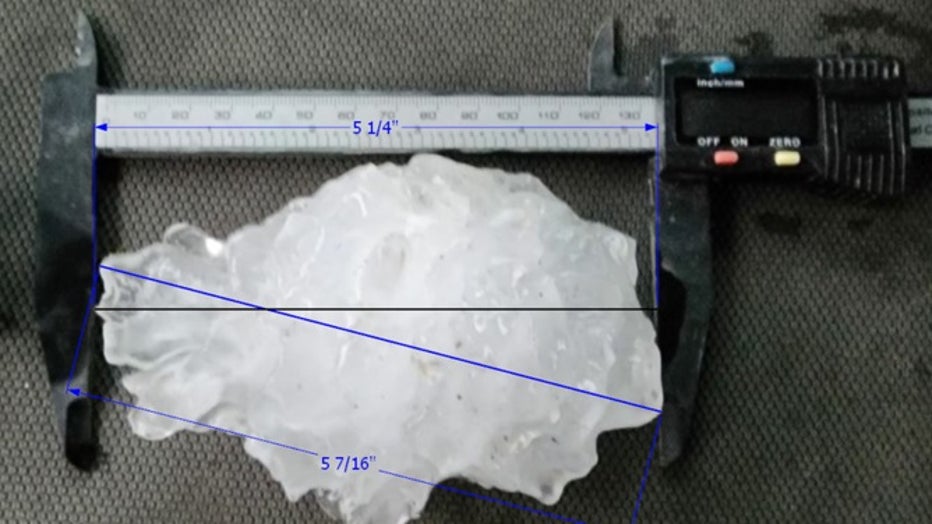
A State Climate Extremes Committee said "Hail yes!" to a new state hail diameter record set near Kirk, CO on Aug 8, 2023. (NOAA)
Aug. 9: Los Angeles got its first recorded August rainfall since 2014. Before 2023, of the 4,500 August days in the record books, measurable rain (≥0.01 inches) has only been recorded on 59 of them. Looming remnants of Hurricane Hilary would later add three more dates to those totals.
Aug. 16: Columbia, South Carolina, recorded a wind gust of 88 mph at its airport – the strongest gust the airport measured since it opened in 1947.
Aug. 18: The first-ever Tropical Storm Watch was issued for Southern California in advance of Hurricane Hilary.

Hurricane Hilary: San Bernardino County flooding
San Bernardino County, California saw some extreme flooding as a result of Tropical Storm Hilary. Eric Sherwin with the San Bernardino County Fire Department joined LiveNOW from FOX's Josh Breslow to discuss the situation in the county.
Aug. 20: Death Valley, California, received 2.20 inches of rain – its wettest single day on record. The valley would later become filled with temporary lakes.

Visitors gather at the edge of the sprawling temporary lake at Badwater Basin salt flats. Oct. 22, 2023. (Mario Tama / Getty Images)
Aug. 21: Oklahoma’s Mesonet network recorded a dew point of 85.14 in Jay – the third time the network’s all-time state record was broken in eight days.
Aug. 21: Remnants of Hurricane Harold kept Austin, Texas’ high temperature under 100 degrees, finally ending a streak of 45 straight days in triple digits and shattering the old record of 27 days set in 2011.
Aug. 24: Chicago reached 100 degrees for the first time since 2012. Houston reached 109 degrees – tying its all-time hottest day.
Aug. 30: Victoria, Texas, managed to set a record high (105 degrees) and record low (62 degrees) on the same date.
Sept. 26: New York City endured 73 hours of rain out of 88 possible hours in the wake of Tropical Storm Ophelia.
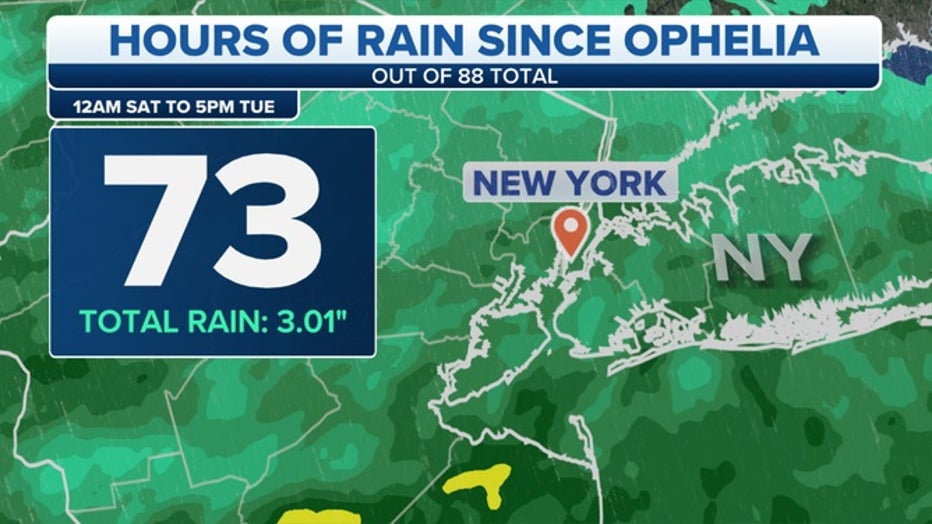
(FOX Weather)
Sept. 30: With just 0.15 inches of rain during the summer, Phoenix endured its driest monsoon on record.
Oct. 4: Burlington, Vermont, reached 86 degrees, marking not only the hottest October temperature on record but it was also warmer than any day the city recorded in August.
Oct. 20: Tucson, Arizona, reached 100 degrees, its latest 100-degree reading on record.
Oct. 26: Worland, Wyoming, dropped to -3 degrees, breaking the town's previous record low by 20 degrees. That was the greatest daily low-temperature smash of the year.
Oct. 31: With 2 inches of snow on the ground in Minneapolis this morning, it was officially the most snow the town has had on the ground on Halloween (though in 1991, it snowed after the official measurement time on Halloween).
Nov. 17: Fort Lauderdale pushed to near 109 inches of annual rainfall, not only smashing the all-time yearly record but becoming the wettest major city in the continental U.S. for 2023.

Drone video shows cars that were submerged and destroyed during historic flooding in Fort Lauderdale, Florida. (Twitter/@douglasthron777)
Nov. 30: Anchorage, Alaska, set a record for the snowiest November with 39.3 inches. It’s the city's fifth-snowiest month on record.
Dec. 3: Marathon, Florida, set or tied a record high for the 84th time in 2023. Now, more than 1 in 5 record highs for Marathon have been set in 2023.
Dec. 6: The high temperature in Lexington, Nebraska, reached a balmy 72 degrees, breaking the town's daily high-temperature record by 17 degrees. It's the greatest high-temperature smash of the year.
Dec. 29: Seattle reached 63 degrees, breaking the record high for the day by 9 degrees. The previous record high for the day of 54 degrees was one of three dates that tied for the coldest current record high temperature in Seattle, with Dec. 18 and Jan. 8. Now, Dec. 29 has flipped and become one of the city’s warmest December record highs. Only two other dates in December have been warmer.
End of the year:
- Nashville went the entire year without high temperatures below 32 degrees – only the fourth time that has happened. It will also be the first year since 1908 that the city hasn't received measurable snow during a calendar year.
- Houston hasn't reached freezing at any point of the year at Bush Intercontinental Airport. This will be the first time the airport has failed to freeze since it opened in 1969. Encompassing all of Houston's weather history, it would be the first time since 1956.
- 11 cities fail to set any record high temperatures for 2023, spread across three states – In California: Eureka, Crescent City, Riverside, San Diego, Burbank and Los Angeles (both LAX and Downtown stations); in Idaho: Lewiston, Burley and McCall; and Anchorage, Alaska.
Who smashed their records the most?
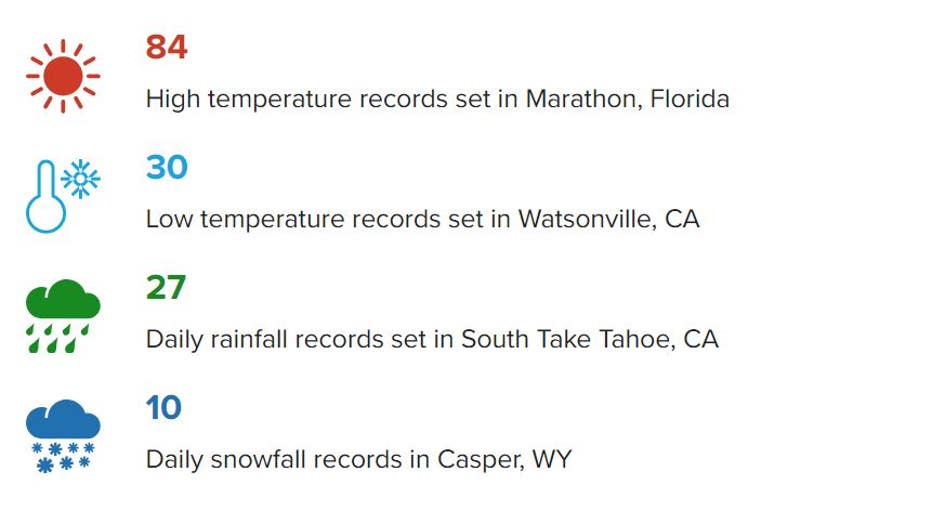
(FOX Weather)

